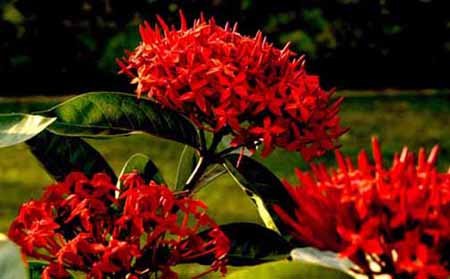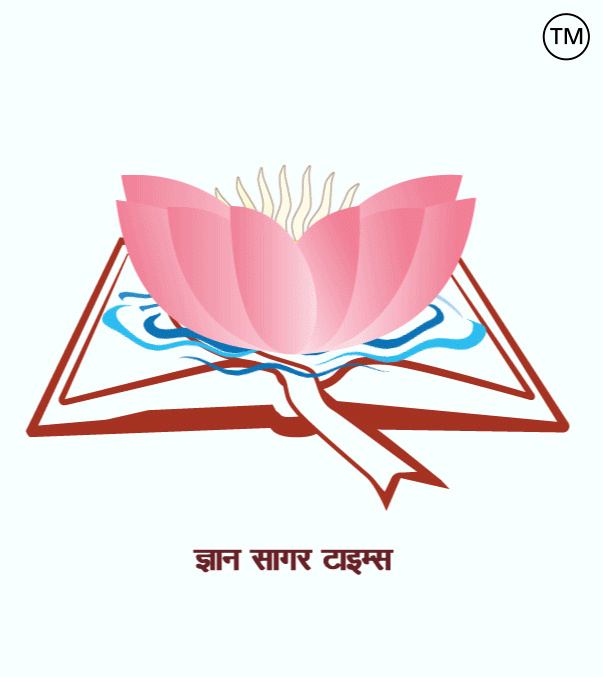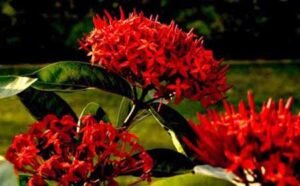
Related to botany – 206.
|
1. Roots that grow from any part of the plant other than the radicle are called? = Placental origin. 2. Roots that develop from the radix are called? = Pestle roots. 3. The female part of the plant in the flower is called? = Pistil. 4. The male part of the plant in the flower is called? = Stamens. 5. Who divided the animals into the animal world and the plant world? = Carolus Linnaeus. 6. Who gave the principle of the five world classification? = RH Wheataker. 7. What is the mineral component of chlorophyll? = Magnesium. 8. On which tree are silkworms reared? = Mulberry. 9. What is the highest quantity found in the variety of Golden Rice? = Vitamin A. 10. What causes autumn in plants? = Axic acid. 11. Which acid is found in spinach? = Oxalic acid. 12. What are bryophytes called? = Briophyta is a large class of the vegetative world. This includes all plants that do not have actual convection tissue, such as mosses, hornwort and liverwort. 13. Name of an aquatic Bryophyta? = Rixia flutanes. 14. What is the difference between Thalophyta and Bryophyta? = In thalophytes, the body is a thallus and not differentiated into stems, leaves, or roots, whereas in bryophytes, although the body is not well differentiated, it may be stem-like and leaf-like. 15. Who is called the amphibian of the plant world? = Bryophyta. 16. Why is Bryophyta called the amphibian of the plant world? = Because they live on land, but are dependent on water for sexual reproduction. Body generation occurs by fission. 17. In which group of plants is water required for fertilisation? = Bryophytus. 18. The Pteridophyta group can be differentiated from the Bryophyta due to its presence? = Convection tissue. 19. In which tissues are specialized for water convection found? = Teridophytes. 20. Most chromosomes are found in = Teridophytes. 21. Who produces seeds? = Gymnosperm. 22. What are multicellular eukaryotic decomposers? = Fungi. 23. Does the embryo have absent strands? = In algae. 24. Proteins that are used within the cell are synthesized by = free ribosomes. 25. What is radish? = In flattened hepatici, from the lower part, which is attached to soil or rock, thin hairs like rhizomes or rhizoid, which absorb water and salts. Apart from these, purple colored scales are produced, which hold the plant with soil. 26. The embryo of a Cycas has two cotyledons, yet it is not classified as a dicotyledon. Why? = Its seeds are seeds. 27. In which cell does the female zygote develop? = Activated myocardium by maternal cell. 28. From whom does Spore get its food? = Receives from Bijandasana. 29. What is the formula for embryotoxin in floral plants? = Triple. 30. The coupling of male and female gametes is called Cao? = Fertilization. 31. Where is the zygote in the flower after fertilization? = The zygote is located within the ovule, which is present within the ovary. 32. Flowers that have only male and female reproductive organs are called? = Hermaphrodite. 33. The process of production of new plants from the physiological parts of the parent plant is called? = Body generation.
========== ============ =========== वनस्पति विज्ञान से संबंधित-206.
1. मूलांकुर के अतिरिक्त पौधे के किसी भी भाग से विकसित होने वाली जड़ें कहलाती है ? = अपस्थानिक मूल. 2. मूलांकुर से विकसित होने वाली जड़ें को कहा जाता हैं? = मूसला जड़ें. 3. फूल में पौधे के मादा भाग को कहा जाता है? = स्त्रीकेसर. 4. फूल में पौधे के नर भाग को कहा जाता है? = पुंकेसर. 5. किसने जीवों को जंतु जगत और पादप जगत में बॉटा था? = कैरोलस लिनियस. 6. पांच जगत वर्गीकरण का सिद्धांत किसने दिया था? = आर.एच. व्हीटेंकर. 7. क्लोरोफिल का खनिज घटक क्या है? = मैग्नीशियम. 8. रेशम के कीड़े किस वृक्ष पर पाले जाते हैं? = शहतूत. 9. गोल्डन राइस की किस्म में सर्वाधिक मात्रा में क्या पाया जाता है? = विटामिन ए. 10. पौधों में पतझड किस कारण से होता है? = एक्सिसिक एसिड. 11. पालक में कौन सा अम्ल पाया जाता है? = ऑक्सेलिक अम्ल. 12. ब्रायोफाइट्स किसे कहा जाता है? = वनस्पति जगत का एक बड़ा वर्ग है ब्रायोफाइटा. इसके अन्तर्गत वे सभी पौधें आते हैं जिनमें वास्तविक संवहन ऊतक नहीं होते, जैसे मोसेस, हॉर्नवर्ट और लिवरवर्ट. 13. एक जलीय ब्रायोफाइटा का नाम? = रिक्सिया फ्लूटेन्स. 14. थैलोफाइटा और ब्रायोफाइटा में क्या अंतर है? = थैलोफाइट्स में, शरीर एक थैलस है और तने, पत्तियों, या जड़ों में विभेदित नहीं है, जबकि, ब्रायोफाइट्स में, हालांकि शरीर अच्छी तरह से विभेदित नहीं है, वे स्टेम की तरह और पत्ती की तरह हो सकते हैं. 15. किसे पादप जगत का उभयचर कहा जाता है? = ब्रायोफाइटा. 16. ब्रायोफाइटा को पादप जगत का उभयचर क्यों कहा जाता है? = क्योंकि ये भूमि पर जीवित रहते है, परन्तु लैंगिक जनन के लिए जल पर निर्भर होते है. कायिक जनन विखंडन द्वारा होता है. 17. किस समूह के पौधों में निषेचन के लिए जल आवश्यक है? = ब्रायोफाइटस. 18. टेरिडोफाइटा समूह को किसकी उपस्थिती के कारण ब्रायोफाइटा से विभेदित किया जा सकता है? = संवहन ऊतक. 19. किसमें जल-संवहन के लिए विशिष्ट ऊतक पाए जाते हैं? = टेरिडोफाइटा. 20. सबसे अधिक क्रोमोसोम किसमें पाये जाते हैं? =टेरिडोफाइट्स. 21. कौन बीज उत्पन्न करता है? = जिम्नोस्पर्म. 22. बहुकोशकीय यूकेरियोटिक अपघटक क्या होते हैं? = कवक. 23. भ्रूण अनुपस्थित किस्में होता है? = शैवाल में. 24. प्रोटीन जो कोशिका के भीतर उपयोग की जाती है,किसके द्वारा संश्लेषित होती है? = मुक्त राइबोसोम्स द्वारा. 25. मूलाभास क्या होता है? = चपटे हिपैटिसी में नीचे के भाग से, जो मिट्टी या चट्टान से लगा होता है, पतले बाल जैसे मूलाभास या मूलाभास (rhizoid) निकलते हैं, जो जल और लवण सोखते हैं. इनके अतिरिक्त बैंगनी रंग के शल्कपत्र (scales) निकलते हैं, जो पौधे को मिट्टी से जकड़कर रखते हैं. 26. साइकस के भ्रूण मे दो बीजपत्र होते हैं फिर भी उसे द्विबीजपत्री में वर्गीकृत नहीं किया जाता है क्यों ? = इसके बीजांड (बीज) नगन होते हैं. 27. मादा युग्मकोद्भिद का विकास किस कोशिका में होता है? = क्रियाशील गुरुबीजाणु मातृ कोशिका द्वारा. 28. बीजाण्ड अपने लिए भोज्य पदार्थ किससे प्राप्त करता है? = बीजाण्डासन से प्राप्त करता है. 29. पुष्पीय पादपों में भ्रूणपोष की सूत्रगुणिता क्या होती है? = त्रिगुणित. 30. नर और मादा युग्मकों का युग्मन काओ कहा जाता है? = निषेचन. 31. निषेचन के बाद पुष्प में युग्मनज कहाँ स्थित होता है? ? =युग्मनज बीजांड के भीतर स्थित होता है जो अंडाशय के भीतर विद्यमान होता है. 32. ऐसे पुष्प जिनमें केवल नर तथा मादा जनन अंग होता है उसे कहा जाता है? = द्विलिंगी. 33. जनक पादप के कायिक भागों से नए पादप के उत्पादन प्रक्रम को कहा जाता है? = कायिक जनन.
|






